| Srl | Item |
| 1 |
ID:
129535
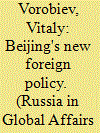

|
|
|
|
|
| Publication |
2014.
|
| Summary/Abstract |
All players expect explanation from China of its initiative to build a New Economic Silk Road. The faster it presents arguments and the clearer they are, the less room there will be for idle speculation and rumor. In any case, China is interested in a favorable response and support for its own foreign policy signals. Chinese leader Xi Jinping first came up with the idea of creating a Silk Road economic space as foreign policy priority for the current, fifth generation of national leaders during a visit in September 2013 to Kazakhstan. In view of the crucial and long-term character of his intention, it is in Russia's interests, as a European and Pacific power and as China's neighbor and long-term bilateral strategic partner, to take a closer look at what content China is putting into this newly conceived project and how the Asian power plans to implement it.
|
|
|
|
|
|
|
|
|
|
|
|
|
|
|
|
| 2 |
ID:
111196
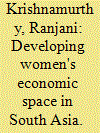

|
|
|
| 3 |
ID:
129647
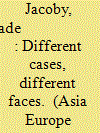

|
|
|
|
|
| Publication |
2014.
|
| Summary/Abstract |
Chinese investment in Central and Eastern Europe (CEE) is booming. As China's investment pattern has emerged so far, it appears to have little to do with Chinese firms' preferences for liberal policy regimes, tolerance for corruption, or reliance on communist-era networks. This article documents the current size and shape of Chinese firms' efforts to internationalize in this economic space, demonstrating an important difference between Chinese investment behavior in CEE and in the EU-15, namely the region's much more active use of greenfield activity (and lighter use of M&A and strategic alliances). Case studies of each mode (greenfield, M&A, and strategic alliances) reveal little evidence of a "China, Inc." approach and much evidence that Chinese firms are more motivated by market access than by technology or management assistance.
|
|
|
|
|
|
|
|
|
|
|
|
|
|
|
|
| 4 |
ID:
138058
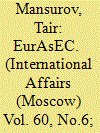

|
|
|
|
|
| Summary/Abstract |
INTEGRATION PROCESSES are a qualitatively new form of interaction between states in the modern world based on the establishment of a common framework for the operation of production factors and a single system for managing the common space, including a supranational component.The goals of integration are usually the same for all regional integration models, but in each particular case they have different motivations and are based on different approaches. The diversity of socio-economic, geographic, geopolitical, historical and cultural conditions generates numerous forms of integration, each of which is unique. The process of international integration as we know it today began in the mid-20th century, so that sufficient theoretical and practical experience has been gained throughout the world in this area.
|
|
|
|
|
|
|
|
|
|
|
|
|
|
|
|
| 5 |
ID:
111700
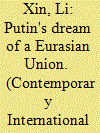

|
|
|
| 6 |
ID:
105056
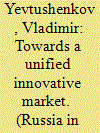

|
|
|
|
|
| Publication |
2011.
|
| Summary/Abstract |
unified Euro-Russian innovation market is capable of ensuring a multiplication effect for any individual investor. Instead of an integrated European energy grid, which has been suggested by the European Union as an artificial incentive for competition, it would be better to create an integrated Euro-Russian innovation network.
|
|
|
|
|
|
|
|
|
|
|
|
|
|
|
|